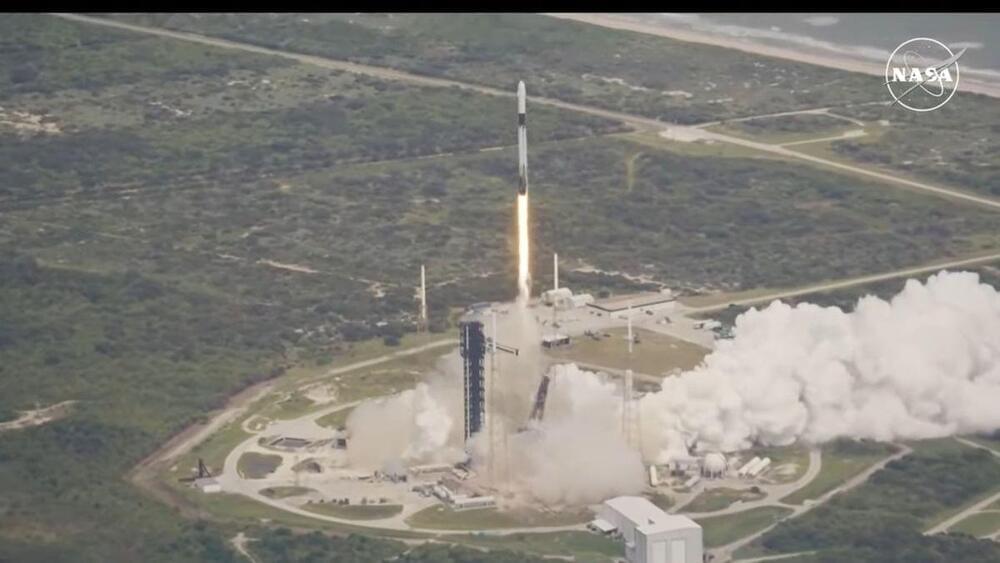Been waiting for this to come out since discovering the Shawn ryan show…pretty excited to be finally getting around to it!
Shawn Ryan Show · Episode.

We often contemplate cyborgs, people enhanced by machines, but what would a civilization built upon cybernetics be like?
Watch my exclusive video Planetary Archives \& Stasis Vaults: https://nebula.tv/videos/isaacarthur–…
Get Nebula using my link for 40% off an annual subscription: https://go.nebula.tv/isaacarthur.
Get a Lifetime Membership to Nebula for only $300: https://go.nebula.tv/lifetime?ref=isa…
Use the link gift.nebula.tv/isaacarthur to give a year of Nebula to a friend for just $30.
Join this channel to get access to perks:
/ @isaacarthursfia.
Visit our Website: http://www.isaacarthur.net.
Join Nebula: https://go.nebula.tv/isaacarthur.
Support us on Patreon: / isaacarthur.
Support us on Subscribestar: https://www.subscribestar.com/isaac-a…
Facebook Group: / 1583992725237264
Reddit: / isaacarthur.
Twitter: / isaac_a_arthur on Twitter and RT our future content.
SFIA Discord Server: / discord.
Credits:
Cyborg Civilizations.
Episode 454a; July 7, 2024
Produced, Written \& Narrated by: Isaac Arthur.
Graphics:
Bryan Versteeg.
Jeremy Jozwik.
Music Courtesy of Epidemic Sound http://epidemicsound.com/creator.
Select imagery/video supplied by Getty Images.


In a new study, astronomers report novel evidence regarding the limits of planet formation, finding that after a certain point, planets larger than Earth have difficulty forming near low-metallicity stars.
Using the sun as a baseline, astronomers can measure when a star formed by determining its metallicity, or the level of heavy elements present within it. Metal-rich stars or nebulas formed relatively recently, while metal-poor objects were likely present during the early universe.
Previous studies found a weak connection between metallicity rates and planet formation, noting that as a star’s metallicity goes down, so, too, does planet formation for certain planet populations, like sub-Saturns or sub-Neptunes.

We may be looking for Martian life in the wrong places. The Viking life detection experiments might have inadvertently killed indigenous Martian life by applying too much water. Instead we should “follow the salt” to find life on Mars! See my blog on BigThink (with link to Nature Astronomy paper), Weblink through my webpage:
Posted on Big Think.

The Sun emitted a strong solar flare, peaking at 6:20 p.m. ET on Oct. 1, 2024. NASA’s Solar Dynamics Observatory, which watches the Sun constantly, captured an image of the event.
Solar flares are powerful bursts of energy. Flares and solar eruptions can impact radio communications, electric power grids, navigation signals, and pose risks to spacecraft and astronauts.
This flare is classified as an X7.1 flare. X-class denotes the most intense flares, while the number provides more information about its strength.

When it comes to searching for life beyond Earth, specifically on exoplanets or exomoons, are researchers searching for the correct biomarkers? This is what a recent study published in The Astrophysical Journal Letters hopes to address as an international team of researchers investigated how certain organic compounds that were long hypothesized to be created by life can be created in a laboratory setting without life present. This study holds the potential to challenge longstanding hypotheses regarding what biomarkers scientists should search for when trying to identify life on other worlds and how we should adapt our search methods accordingly.
For the study, the researchers successfully created dimethyl sulfide, which is an organic sulfur compound typically produced by marine algae, using a combination of light and gases that have been identified in the atmospheres of exoplanets. The caveat is no organisms were present to create the dimethyl sulfide, which left the researchers puzzled due to the longstanding hypothesis that marine organisms were the only way dimethyl sulfide was created.
“The sulfur molecules that we’re making are thought to be indicators of life because they’re produced by life on Earth,” said Dr. Eleanor Browne, who is an associate professor in the Department of Chemistry at the University of Colorado Boulder, and a co-author on the study. “But we made them in the lab without life — so it might not be a sign of life but could be a sign of something hospitable for life.”


This conversation between Max Tegmark and Joel Hellermark was recorded in April 2024 at Max Tegmark’s MIT office. An edited version was premiered at Sana AI Summit on May 15 2024 in Stockholm, Sweden.
Max Tegmark is a professor doing AI and physics research at MIT as part of the Institute for Artificial Intelligence \& Fundamental Interactions and the Center for Brains, Minds, and Machines. He is also the president of the Future of Life Institute and the author of the New York Times bestselling books Life 3.0 and Our Mathematical Universe. Max’s unorthodox ideas have earned him the nickname “Mad Max.”
Joel Hellermark is the founder and CEO of Sana. An enterprising child, Joel taught himself to code in C at age 13 and founded his first company, a video recommendation technology, at 16. In 2021, Joel topped the Forbes 30 Under 30. This year, Sana was recognized on the Forbes AI 50 as one of the startups developing the most promising business use cases of artificial intelligence.
Timestamps.
From cosmos to AI (00:00:00)
Creating superhuman AI (00:05:00)
Superseding humans (00:09:32)
State of AI (00:12:15)
Self-improving models (00:16:17)
Human vs machine (00:18:49)
Gathering top minds (00:19:37)
The “bananas” box (00:24:20)
Future Architecture (00:26:50)
AIs evaluating AIs (00:29:17)
Handling AI safety (00:35:41)
AI fooling humans? (00:40:11)
The utopia (00:42:17)
The meaning of life (00:43:40)
Follow Sana.
X — https://twitter.com/sanalabs.
LinkedIn — / sana-labs.
Instagram — / sanalabs.
Try Sana AI for free — https://sana.ai